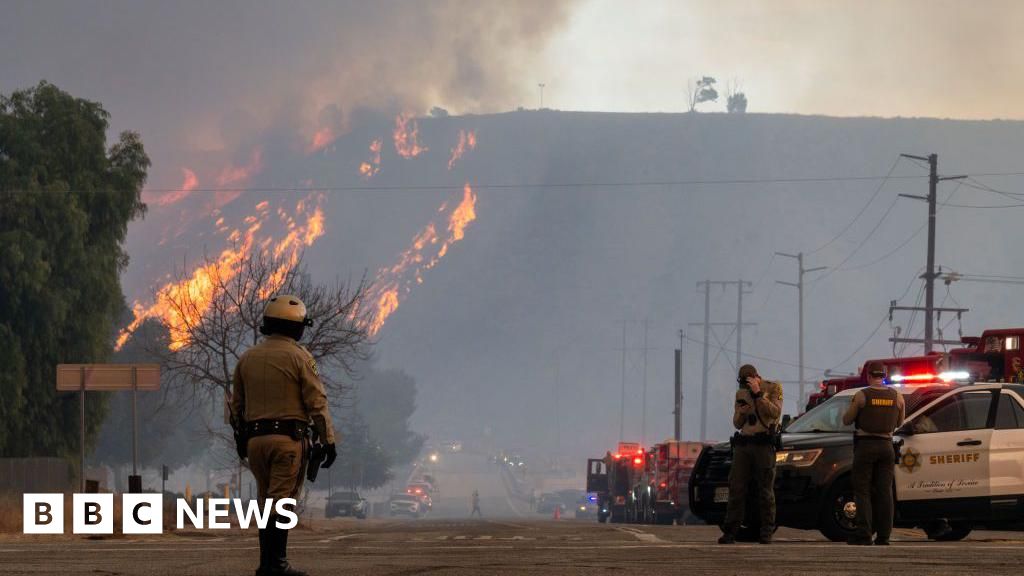
As part of our commitment to truth and transparency, this fact check analysis was conducted following a request submitted by one of our valued subscribers. Remember, you too can submit your fact check requests through our platform, and we’ll investigate and share the verified results for free.
Fact Check Analysis: Hughes Fire Sparks Questions
Wildfires are a recurring crisis in Southern California, yet each new blaze brings unique challenges and concerns. The original BBC article titled “Hughes fire: Thousands evacuate amid blaze near Los Angeles”, authored by Christal Hayes, draws attention to a fast-moving wildfire in Los Angeles County. While it provides critical updates, our analysis reveals key areas where misinformation, missing context, and ambiguous claims emerge, complicating the understanding of the Hughes fire’s urgency and the measures being undertaken to combat it.

Identifying Misinformation and Missing Context
In turbulent times, clarity is crucial. This piece fell short in several areas, requiring a detailed breakdown of the facts:
MISLEADING COMPARISON BETWEEN FIRES
The article attempts to differentiate the Hughes fire from “the mammoth blazes” earlier this month but fails to provide essential context. For example, while it mentions “winds are not as strong yet” and that Hughes is burning in a “less populated” area, it doesn’t clarify how such differences reduce or amplify risks to residents. This vague comparison may mislead readers into believing the Hughes fire, though smaller, poses less danger—this is contradictory to later remarks about its potential to “jump the lake” and escalate.
AMBIGUOUS STATEMENTS ABOUT PREPAREDNESS
Los Angeles County Fire Chief Anthony Marrone’s statement that crews are “making progress” is left unbalanced with hard data. The article omits critical metrics—like current containment percentage or resources deployed—that would better quantify the preparedness of officials. Furthermore, earlier fires that reportedly claimed 28 lives and devastated over 10,000 properties are mentioned but without linking their aftermath to existing preparedness efforts. Readers are left wondering whether previous disasters have equipped crews with improved tactics—or if the region’s challenges remain unchanged.

LACK OF ACCOUNTABILITY FOR EVACUATION DISRUPTIONS
While the article briefly mentions Interstate 5 closures and evacuation challenges, it misses essential details. For example, how effective are evacuation warnings in rural zones like the Castaic area? Was the blocked highway part of an orchestrated effort ensuring resident safety? For homeowners trapped on the road, like the woman quoted, what steps, if any, were implemented to expedite safe passage? Such omissions create holes in readers’ interpretations of the region’s level of preparedness.
POTENTIAL BIAS IN DESCRIBING “CAUSES”
The article attributes the intensification of wildfire seasons to “Santa Ana winds” and “a dry year” but misses the opportunity to evaluate potential longer-term causes such as climate change, forest mismanagement, or urban expansion into fire-prone areas. While some may interpret this as an effort to streamline reporting, others may see it as avoidance of politically sensitive topics. The selective cause-and-effect focus prevents a broader understanding of why fires like Hughes have become so frequent.

Answering the User’s Key Question
What makes the Hughes fire different from the other recent fires in the area, and how prepared are officials to contain it?
After thoroughly verifying and analyzing the article, here’s the answer.
The Hughes fire differs from earlier wildfires primarily because of its location and weather conditions. Unlike the densely populated areas impacted by the Palisades and Eaton fires, Hughes is burning in a more rural region near Castaic Lake, home to fewer residents. Winds, although currently weaker, are predicted to strengthen and pose serious challenges in containing the blaze. Additionally, the lake itself acts as a natural barrier—if the fire breaches it, conditions could turn catastrophic.
In terms of preparedness, officials are moderately equipped. Los Angeles County has already deployed fire crews and air support, but without hard data on progress (e.g., the percentage of fire containment or number of active firefighters), it’s difficult to gauge their effectiveness. Lessons from the earlier fires in January should have fortified strategies, yet ongoing challenges, such as evacuation bottlenecks and dry conditions, emphasize the region’s vulnerability to fast-moving disasters.
Final Verdict
The BBC article provides valuable updates but falls short in several areas of factual clarity and depth. The lack of context about preparedness, ambiguous comparisons, and avoidance of broader causes detracts from the critical information readers need during a time of crisis. Claims remain loosely supported without sufficient data to back them up, and some simplifications verge on misleading.
To combat misinformation and stay informed, turn to trustworthy fact-checking platforms like DBUNK. We’re launching soon to provide the clarity you need without partisan bias. Together, we can hold misinformation accountable and empower communities.
Check out the original article here: BBC News: Hughes Fire Coverage.

Join the Fight Against Fake News
We know misinformation is frustrating and harmful. DBUNK is here to empower you to cut through the noise and take back control of the truth. Connect with us on social media or download our app when it launches to stay ahead in the battle against fake news!

